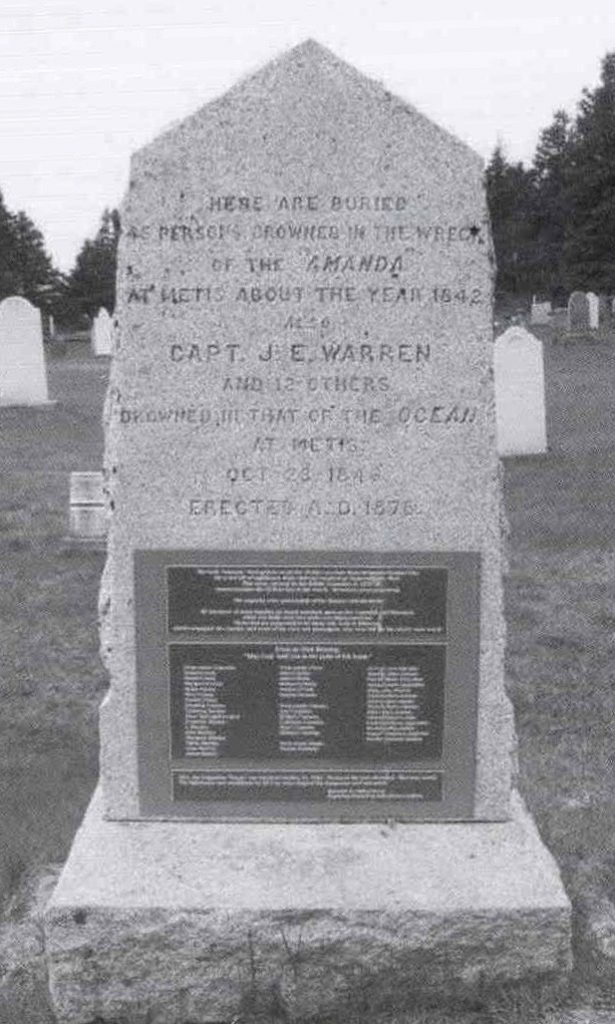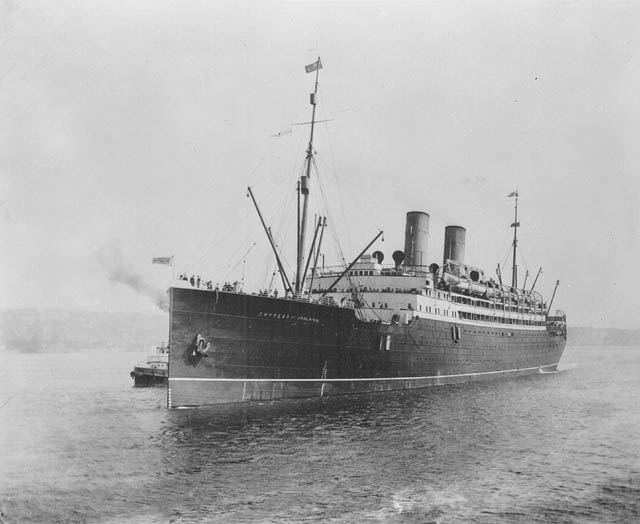The Maritime Heritage of Metis – Shipwrecks and Life on the Sea
For most of the 19th century, if Metis made the news at all, it was because of a maritime disaster. Vessels picking up cargo in Metis or leaving it there made the papers. So too did the sighting of vessels. “Seen passing Metis” was deemed sufficiently important to make the shipping news, the marine intelligence reports that were a key section of newspapers in Montreal, Quebec City, New York and London.

The grave stone erected at the cemetery at Leggatt’s Point commemorates those who drowned in the sinking of the Amanda in 1841 and the Ocean in 1846.

Remnants of life-boats and rafts from the sinking of the Empress of Ireland, the greatest maritime disaster in Canadian history, were found on beach in Metis.
Wrecks were big news. They headlined newspapers around the world. Woeful descriptions sometimes detailed death by drowning or sailors freezing on the desolate Gaspe shore. Local heroics were recognized. The auction of the cargoes of stranded ships filled columns in the classified ads. Inquests and inquiries that followed the most serious wrecks kept maritime disasters in the news for months. Captains, sailors and observers could be counted on to share their version of events, writing in their own defence in the daily papers, feeding the interest and making for fascinating reading.

A 1942 advertisement in Le Devoir warned about the perils of the German menace, referencing the sinking of the SS Carolus in Metis the previous year.
While the St. Lawrence has the appearance of being a maritime desert today, Metis once had a thriving community of mariners who earned their livelihood from the sea. There were fishermen, pilots, captains and shipowners. There was a handful of boatbuilders. There were even a couple of bootlegging bandits, who ferried contraband and liquor to and from Anticosti Island and St. Pierre and Miquelon during the Prohibition era.

Arthur Mathewson was recognized for his bravery in rescuing several young men from drowning in the St. Lawrence near his summer home in Metis.
In this shifting maritime environment, there is one constant – the perilous nature of the St. Lawrence and the need for prudence for those venturing into its waters.

